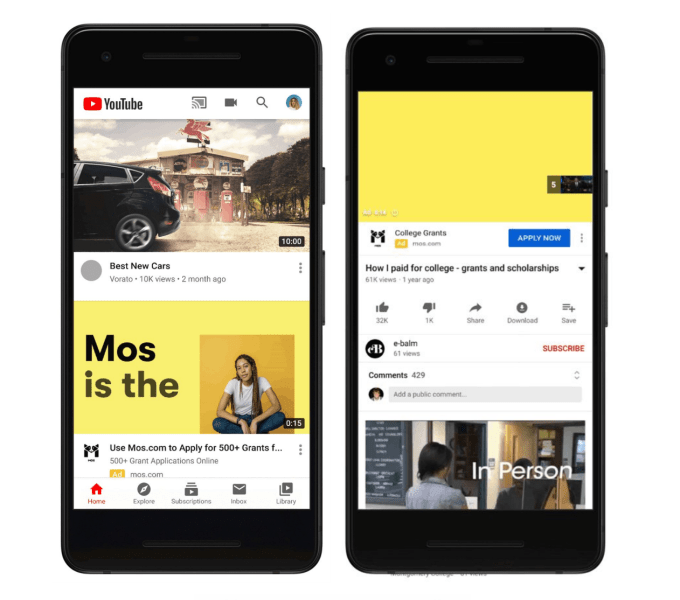YouTube today announced a new direct action advertisement format that will make YouTube video advertisements more “shoppable” by adding browsable product images beneath the advertisement to drive traffic straight to brand names’ product pages. The intro of the format comes at a time when marketers are searching for new methods to catch consumers’ growing interest in e-commerce shopping, amidst a pandemic that’s kept people from shopping brick-and-mortar physical stores for worry of infection.
YouTube, in specific, thinks its platform can serve this shift in interest, considered that today 70%of people claim they’ve bought a brand name’s product since they saw it in a YouTube video.

To use the brand-new shoppable format, brand names will first need to sync their Google Merchant Center feed with their video ads. They can then visually expand an ad’s “call to action” button with the best-selling products it wants to include in the ad in order to generate traffic that sends viewers directly to the item listing on the brand’s own website.
One early tester of the new format was Aerie, which wished to promote on YouTube to both boost consumers’ love for its brand and its clothing sales for its Spring 2020 project. The company ran targeted advertisements on YouTube and saw a 25%higher return on ad invest than the previous year, along with nine times more conversions than with their traditional advertisement mix, YouTube states.
Associated with this news, YouTube likewise announced “Video action projects”– a way to bring YouTube video ads that drive these sorts of calls-to-action to YouTube’s home feed, view pages and Google’s video partners, from within one project. The business states it will also consist of any future inventory that appears, like the What to See Next feed.

An early tester for this advertisement product was the start-up Mos, which intends to assist students find college scholarships. Over the past few months, Mos saw 30%more purchases for its service at a 3rd of the cost, compared to its previous YouTube standards, said YouTube.
Brands can also use the lead-generation types in addition to their video advertising campaign to record more leads while also running their ads, as Jeep finished with its Korea branch causing a 13 x boost in finished leads at an 84%lower expense per lead.
YouTube isn’t the only tech giant that’s focused more heavily serving the needs of brand names– and particularly e-commerce brand names– in current months. Snapchat likewise this month broadened its vibrant ads for e-commerce merchants worldwide, allowing brand names to quickly run automated product ads on Snapchat’s app by way of design templates connected to product brochures.
But YouTube’s ads are maybe more similar to those shoppable video advertisements now appearing on streaming services like Hulu and NBCU’s Peacock, where audiences can transact utilizing their remote control. In YouTube’s case, nevertheless, audiences are simply clicking and tapping their method through to the marketer’s site.
Like lots of, YouTube believes organisations will continue to need services like these to discover leads, boost their web traffic and drive more online sales, even when coronavirus-driven government constraints lift and physical stores re-open.
Normally, statements like this would have been made at YouTube’s NewFronts presentation, but as that event is now online-only due to the pandemic, YouTube has rolled out the news early.
TechCrunch.
